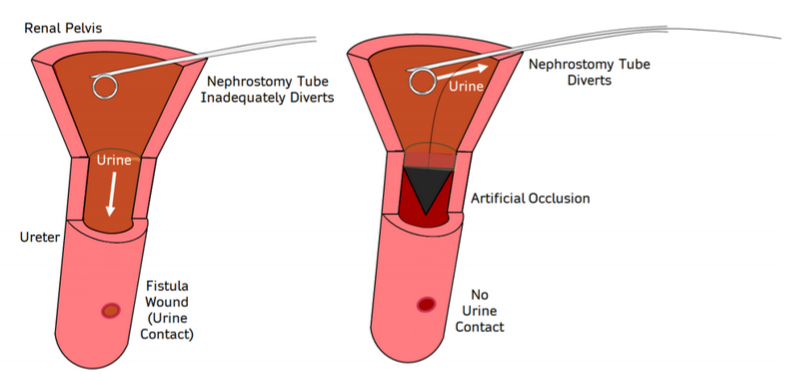Ureteral occlusion device diverting urine from damaged urinary system tissue
Team: Advanced BME Design Team: UroDeflect
Program:
Biomedical Engineering
Project Description:
Urinary diversion via a percutaneous nephrostomy tube or nephroureteral stent is a surgical procedure that temporarily redirects the natural flow of urine out of the body through decompression, utilizing the pressure gradient created by a pathological obstruction in the urinary system (typically kidney stones or malignancy). These decompressive devices continue to be used in cases of fistulas, leaks, and surgical anastomoses despite no obstruction to create the pressure gradient needed to divert urine. This treatment gap results in persistent urine flow and continued damage from continuous contact with urine, resulting in delayed healing of the
wound. Hence, there is a demonstrated need for a reliable, complete urinary diversion, which would decrease the frequency of patient returns to the hospital because of insufficient healing. UroDeflect aims to improve temporary urinary diversion by Interventional Radiologists in non-obstructed cases by providing a non-migrating, artificial obstruction to safely divert urine while minimizing tissue damage. Furthermore, UroDeflect is deployed via similar methods as current decompression devices and thus can be easily integrated into the current Interventional Radiology clinical workflow.
Team Members
-
[foreach 357]
-
[if 397 not_equal=””][/if 397][395]
[/foreach 357]
Project Mentors, Sponsors, and Partners
Course Faculty
-
[foreach 429]
-
[if 433 not_equal=””][/if 433][431]
[/foreach 429]
